Erik Qualman's Blog, page 643
January 24, 2013
Does Social Media Make Tax Season Less Burdensome?

 Unless you have a passion for pain, doing your taxes probably ranks right up there with going to the dentist and getting a jury duty summons. Inevitably, however, the tax man will come calling sooner or later.
Unless you have a passion for pain, doing your taxes probably ranks right up there with going to the dentist and getting a jury duty summons. Inevitably, however, the tax man will come calling sooner or later.
As millions of Americans try to organize all their paperwork and receipts this time of year, it begs the question, do tax preparers turn to social media in an effort to get more people in their front doors?
While some tax professionals are giving social media a shot in an effort to educate consumers and attract more business, it appears many are staying put on the sidelines.
According to a recent Drake Software survey entitled “Social Media and the Tax Professional,” the vast majority of tax pros are relying on word-of-mouth promotions to get more business.
With more than 1,700 tax professionals surveyed, the results showed:
* 74.3 percent spent zero funding on social media;
* 31 percent stated that they either didn’t have the time, desire or understanding to implement a social media strategy;
* For those involved in social media, 76 percent fail to have a content plan or schedule;
* 54 percent who have made such efforts indicated they were not as effective as traditional marketing;
* 9 percent said social media marketing proved a better marketing tool than traditional means.
Given those numbers, it appears that the vast amount of tax pros are shying away from social media, though more may find it to their liking and/or even a necessity in the coming years to reach out to consumers. Since so many Americans do their own taxes on a yearly basis, be they consumers who have a background in taxes, payroll service or finances in general, a large number of tax pros may just feel like there is not a great enough audience waiting for them on social media.
In any case, tax pros not currently using social media should not dismiss it as a fad that will come and go in the near future. As many business pros have seen in recent years, social media can have a positive impact on their return on investment (ROI) and ability to grow their companies.
For tax pros still hesitant to claim social media, keep the following in mind:
* Time and effort – Unlike other forms of marketing that can cost you money, social media is essentially a free means to promote your tax services. The biggest task at hand is making the time and effort to advertise yourself and your business on SM. As more consumers turn to social media to shop for and buy goods and services, your time and effort can be a very worthwhile investment;
* Privacy does matter – If you use social media to promote your tax services, by all means make sure you do not divulge any of a client’s personal information in online discussions. Often times, consumers will turn to social media to discuss issues and get their questions answered on a variety of matters. As a tax pro, make sure if you have discussions online with consumers that sensitive data and details are not released to the general public. Not only is it seen as not professional, but it could end up costing you potential business, along with potential legal issues;
* Correct information – As it seems tax laws are forever changing, make sure any tax advice you provide via social media is updated and correct. The last thing you want to do is spread erroneous tax information online, information that is picked up and thought to be accurate by many consumers;
* A little advice – Finally, if you are using social media to promote your tax services, pass along a little friendly word of advice to the consumers you work with. Just like many other agencies and groups, it is not uncommon for the IRS to monitor social media chatter. If your customer has issues paying up on their tax obligations, advise them off the record not to go shouting to the world on social media that they just came into a sizable amount of money, etc. Social media communication between the tax preparer and the consumer should always be professional and be removed of any personal information that could compromise either the tax pro or the customer.
At the end of the day, tax professionals may ultimately discover that being on social media isn’t so taxing after all.
Photo credit: smartgivers.org
[image error]
January 23, 2013
The History of Twitter


The History of Twitter
“This is what the naysayers fail to understand: it’s just as easy to use Twitter to spread the word about a brilliant 10,000-word New Yorker article as it is to spread the word about your Lucky Charms habit.” -Steven Johnson, author of The Invention of Air
Twitter is approaching its 6th birthday soon and the platform has really come a long way from its early beginnings. Twitter is one of the most popular social networks used today but it began as another micro-blogging platform created by programmers who worked at the podcasting company Odeo Inc. in San Francisco, California.
Jack Dorsey (@Jack), Evan Williams (@Ev) and Biz Stone (@Biz) had big plans for Twitter but they likely had no idea how popular it would truly become. When they first created the site, they were just looking for a way to send text messages on their cell phones and a way to reinvent a somewhat dying company.
On March 21, 2006, @Jack sent the first tweet: “just setting up my twttr.” It would be the beginning of a revolution. Now people from all over the world and many different fields and professions are saying it all in 140 characters or less. Dom Sagolla (@Dom), in tweet 38, typed these prescient words: “Oh, this is going to be addictive.”
And addictive is certainly a good word for it…
Twitter Beginnings
So how did Twitter get its name? Supposedly, the name was inspired by the photo-sharing site, Flickr, and other considerations were FriendStalker and Dodgeball. The definition of twitter is “a short burst of inconsequential information” and “a series of chirps from birds”.
The name was fitting and so the new platform became Twitter. Soon the “chirps” of many twitterers would be heard/seen throughout the Twitterverse as the microblogging platform caught on with Internet users. It would still be a couple of years before it was fully mainstream but it didn’t take this new site long to gain fame.
Why 140 characters only? The limit was set because 160 characters was the SMS carrier limit and they wanted to leave room for the username.
Twitter Spreads the News
Twitter is much more than just your friends telling you about their day. It has changed the media, politics and business. Many will report they hear their news first on Twitter- stories of natural disasters, sports scores, the death of a celebrity and more are shared first on Twitter.
Social media and microblogging site Twitter has changed political communication profoundly. In the past, political news and commentary was only reported by a select group of those “in the know”. But today, we see both politicians and the Average Joe on Twitter sharing their political banter and opinions. It is a new era of citizen journalists and we see people speaking up and speaking out about the things that are important to them.
Twitter has also had an impact on business as brands find a new way to reach their fans where they are already- in social media and on their smartphones. Twitter has become a tool that businesses large and small can use to reach their target market, provide customer service, share their unique content and more. It’s also become a way for everyday people to keep in touch with their favorite celebrities and a tool for the celebrities to stay in contact with their fans.
This brings us to some of the most popular Twitter accounts.
Most Popular Twitter Accounts
According to Twitaholic, these are the current five most popular Twitter accounts:
Lady Gaga (@ladygaga) 33,265,051 followers
Justin Bieber (@justinbieber) 33,262,987 followers
Katy Perry (@katyperry) 31,405,485 followers
Rihanna (@rihanna) 27,928,899 followers
Barack Obama (@BarackObama) 25,963,966 followers
It’s no real surprise to see entertainers taking the lead there on the list.
One important thing to note about these top Twitter accounts is that many of them have fake Twitter followers. For some time, this info was obscured but there are now tools that can analyze a user’s account and give you more details about their followers, including how many bots or “fake” accounts they have following them.
Status People has a “fakers tool” that allows you to see how many fake followers your friends have. Just put someone’s Twitter handle in and check out their stats for yourself. While the average Twitter user might have different statistics, most highly popular or celebrity accounts have at least some fake followers.
Lady Gaga has 32% fake followers 35% inactive so only 33% of her followers are considered “good”. President Obama has 23% fake, 31% inactive and 46% good. The Biebs has 16% fake, 37% inactive and 47% good, based on this tool.
Twitter Today
Today Twitter has over 200 million users with about 460,000 new accounts being created each day. There are more than 140 million tweets sent each day and while the company had only eight employees in 2008, they now have more than 400 and they’re hiring.
David Foster Wallace said that the Internet was “the bathroom wall of the American psyche,” which led The New Yorker to ask its readers to define Twitter in a tweet. They got some very interesting and sometimes funny responses:
@dnahinga – “Alone Together”
@Wodespain – “Communicative disease”
@Winooski – “Crouching Grammar, Hidden Manners”
@anglescott – “Twitter is the dime store in the marketplace of ideas”
@jaelmchenry – “A riddle wrapped in an enigma wrapped in typos wrapped in bacon.”
@francesolimpo -“Twitter is like the ocean: There’s a lot to wade through, and occasionally you’ll see a whale”
@yamageo -“Twitter is the glory hole in the bathroom wall of the American psyche.”
If you could define Twitter in a tweet, what would you say?
[image error]
January 18, 2013
How social media can affect your home insurance

It’s a strange phenomenon that something as intangible as social media can be responsible for extra costs in your home, but it’s a very real one. These days, almost everyone is connected to at least one social networking account, and once you have a presence online it can be nearly impossible to remove it permanently. Amidst the pictures of kittens, parodies of Gangnam Style and hashtags, social media has the potential to impact your home insurance policy.
Voided claims – don’t be a fool

A burglar breaking in to steal a laptop
If your house was burgled while you were out, and you didn’t lock your front door, your home insurance company could well refuse your claim on the grounds that you didn’t take adequate precautions with your home security. This would have unnecessarily increased the risk of burglary, and the blame for the lapse in security would fall on you.
Likewise, what if you post on Facebook that you got a brand new Smart TV for Christmas (complete with photo of it nestled in front of the living room window) followed by a post to say that you’re going away for a weekend? All any potential thief would need is your home address and they’ve got themselves a free TV. Oh, wait, your home address is on your Facebook profile, bold as brass.
If you come home and are missing a TV, your home insurance provider might have limited sympathy with you since you’ve provided your thief with the necessary information to target your house. When fifty convicted burglars were asked if social media makes burglary easier, 78% of them said that social networks are actively used by thieves to target houses (source: http://www.confused.com/news-views/infographics/social-media-crime).
“Surely, no one would be as silly as to post their whereabouts online?” you cry. Actually, people do. A survey carried out by Santander at the end of 2012 showed that nearly half (43%) of people surveyed said they’d post online that they’d be going away for the holidays, meaning that one in three houses could easily be targeted for burglary.
Fraudulent claims – that’s what friends are for
Another way that your online presence can affect your home insurance is if you try to pull a fast one when you make a claim. Let’s say that you put in a home insurance claim for water damage to the carpet, and you say that it’s from a burst pipe. You’re a smart one so you make sure that your privacy settings are tighter than Fort Knox, and the claim starts to move as planned. What you didn’t bank on was a friend of yours who posts a photo (and tags you in it) of you in your living room with a hosepipe and the caption “The party got a little out of hand when we decided to water the carpet. LOL!”.
What makes matters worse is that your friend is pretty blasé when it comes to privacy settings, meaning that everyone and their grandma can see the photo, including the company who are processing your claim. At the very least, the claim could be voided because you’ve not disclosed all the relevant information to the company. If you’re unlucky, it could be marked as a fraudulent claim, meaning a soggy carpet is the least of your worries.
This method has been used to prove fraud in car insurance claims in the past and also to prove health insurance fraud in the US. In the case of Locke v Stuart 2011, it was found that a fraudulent claim for injury and damages was being made as part of a wider fraud network. Part of the evidence that proved this were printouts of Facebook profiles that linked the accused to a number of known fraudsters. A precedent has now been set – if there’s evidence of fraud on your social networking profile (or those of your friends), you can bet that it will be used against you if you try anything funny.
What can I do?
Gareth Kloet, head of home insurance for Confused.com, says, “something like Foursquare or the check-ins on Facebook broadcasts people’s locations on a platform which has 1 billion users – you don’t need to be an insurance provider to see the risk that poses. I wouldn’t be surprised if we see rises of up to 10% for social media users in the future.”
Your online presence is the version of you that’s perceived as being closest to ‘the real you’. Therefore, the best thing to do is to make sure that only the right people have access to your information. Check and check again your privacy settings to make sure that your posts, photos and information aren’t being made public accidentally. It would also be wise to check that the people on your friends list can’t tag you in their posts and photos without your approval. This gives you an extra level of control over your online image so that you’re not giving any information away. Make sure that your personal information stays personal, and don’t give your home insurance provider an excuse to bump up your premium or refuse your claim.
Jamie Gibbs is the resident blogger, gadget nut and social media zombie for home insurance comparison site Confused.com. He has sworn off both Instagram and Facebook, but now instead he refreshes his Twitter feed every 30 seconds in case he misses something.
[image error]
January 16, 2013
Leveraging LinkedIn when starting your career
Anyone that is looking for a way to be hooked up with a company for a career should look towards creating a LinkedIn account. LinkedIn offers a great way to increase your job opportunities when you are first starting career or even when you are simply looking for a career change. The social media site offers several tools that you can use during your career search.
Personal branding
The first thing that you need to do is brand yourself. This will involve taking a good look at your passions, values, and aspirations. For example, if you are an environmentalist, it is unlikely that you want to work for a big oil company, no matter how much they are offering to pay you.
When you truly consider your values, you will then be able to more fully understand what makes you the best at what you do. This will make your personal branding consistent as well as believable.
You will want to make sure that your profile on LinkedIn truly represents who you are and what you are looking for. Consider that your profile is the first impression that you are making on a potential employer. You want to represent yourself in an attractive manner. If you do not take the time to create a great profile you may simply be passed by because the employer was not impressed by your first impression.
Networking
Once you have established your personal brand you will want to begin networking. Spread the message that you are looking for a job opportunity right now. Job searches today require the laws of big numbers. Spreading the word that you are in need of a job immediately can help you reach out to people as they know you are available. LinkedIn offers a status update feature that will allow your network to know that you are available for a position.
Groups
Join groups on LinkedIn. These groups are one of the best ways possible to network yourself. If you prefer freelance work, groups can open up many opportunities for you. There are many topic specific groups available that allow you to pick and choose which ones you want to take part in. By joining groups you will find people with the same interests as you. This can provide you with stimulation to complete projects that you are currently working on. Another great thing about groups is that you can ask other members of the group to add you to their networks.
Follow companies
It is a really good idea to follow some companies on LinkedIn. This will help you determine who is being hired at certain companies and who is being let go. The LinkedIn site of a company will also allow you to see new job postings as they become available. Amazon encourages any prospective applicant to reach out to them through their LinkedIn account.
Keeping in touch
It is one thing to sign up for a LinkedIn account and create a profile and it is quite another to actually use it. LinkedIn in is available as a mobile phone app that makes it even easier to network or respond to contacts on the go. Once you start making connections with people make sure that you keep them. Try to check your account at a minimum of once a week. It is better to check it once a day. Consider checking your LinkedIn account as you would check your email. This will help you tweak your profile a little at a time and determine if there are some new connections that you could be making. Try to join in on a discussion with one of your groups at least once a week as well.
The main thing to remember when using LinkedIn as a start to your career is that it is a networking source. The point of the site is to help you reach out to potential employers. You will need to be diligent with your search and make sure to maintain a well written profile. Reach out to people and remain active on the site and you should not have any problems locating potential employers and hopefully landing a job as well.
[image error]
January 9, 2013
Think Like Zuck – 5 Questions with Ekaterina Walter

[image error]You’ve seen the movies, read the books, and shared the infographics about the rise and success of Facebook. But you may not be applying the business lessons of the Facebook story to your own marketing activities. Now you can with Think Like Zuck: The Five Business Secrets of Facebook’s Improbably Brilliant CEO Mark Zuckerberg, the upcoming book by global marketing strategist Ekaterina Walter. I sat down with Ekaterina for some Q&A in anticipation of our January 10th webinar Engaging Your Customer Base on Facebook.
Who should read Think Like Zuck? What should a reader expect to get from the book?
Anyone who has a passion for innovation and disruption. Those who have an entrepreneurial streak, whether they are an intrapreneur (a person who drives change within a large company) or an entrepreneur (someone who owns his/her own business). And just anyone who wants to learn from other successful leaders.
Packed with examples of Facebook’s success principles in action—as well as those of Zappos, TOMS, Threadless, Dyson, and other companies—Think Like Zuck gives you the inspiration, knowledge, and insight to make your own mark in the world, to build a business that makes a difference, and to lead your organization to long-term profitability and growth.
Are the elements that made Facebook successful applicable to all businesses?
Absolutely. I talk about 5 Ps, five secrets of success: Passion, Purpose, People, Product, Partnerships. Those can be extended into whatever business/product/project you creating, building or leading. Within each chapter there is a number of lessons to be learned clearly marked and backed by the relevant stories and examples.
You talk about both entrepreneurs and intrapreneurs (someone with the entrepreneurial streak who aligns their talent in a large company). Do you think this mindset is critical for every employee to have?
It is very important, yes. But it isn’t always present because we don’t do great job aligning peoples’ passions with the jobs we give them or projects we align them with. Those who are passionate about something are the ones who will lead true change (within a company or beyond). I talk about the fact that there are more entrepreneurs out there than we think there are. You might not think about yourself as one unless you encounter something you care about, your true purpose, then watch out – you will become an entrepreneur, you will make your vision happen and you will probably do it creatively and with the limited resources.
So yes, I believe that every one of us has a hidden entrepreneur within him/her. And it is our responsibility as organizations, as leaders to create an environment where people’s internal entrepreneur would thrive.
In your upcoming webinar Engaging Your Customer Base on Facebook , you specifically cite Intel for their fan engagement. What caused you to single them out?
Well, 2 reasons. First, I work there and I led the growth of our global communities of over 23 million people on Facebook. Second, while I do cite examples of other brands and what they did right, I can share internal knowledge and struggles we had at Intel to help others either follow in our footsteps or avoid our mistakes.
Facebook has been pushing more options for brands to pay for engagement. Do you think brands will be forced to use these paid options or will they be able to successfully build engaged communities within Facebook without utilizing paid options?
There are a lot of ways to increase your community organically and I talk about that in my webinar. But the fact that not all of your fans see your posts (if you are lucky, 5-15% of your fans see your posts organically due to the NewsFeed algorithm) is a reality. As marketers we need to work hard on making sure our content stands out and people engage with it regularly (that’s what will boost our organic exposure), but we also need to consider investing in Sponsored Stories to ensure some of our critical content is seen by more fans and their friends. This isn’t any different than what we had to do in traditional advertising.
Bonus question: How can others connect with you?
I am always available on Twitter (@Ekaterina) and anyone can reach me on my blog www.ekaterinawalter.com.
For more insights from on standing out, be sure to attend the upcoming webinar: Engaging Your Customer Base on Facebook. You can also download a free chapter of Think Like Zuck: The Five Business Secrets of Facebook’s Improbably Brilliant CEO Mark Zuckerberg.
[image error]
January 8, 2013
Is Your Online Reputation Getting Too Social?

 As you cross things off your calendar in 2013 that concern your small business, where does making sure your online reputation is secure rank?
As you cross things off your calendar in 2013 that concern your small business, where does making sure your online reputation is secure rank?
Unfortunately, too many small business heads don’t take the time to Google their individual and company names, leaving things to chance as to whether there is negative information floating around on the Internet about them.
So, how can you can as a small business owner go about securing your online reputation, or at least cutting the negative data that may be out there?
Several of the recommended steps include:
1. Do an online search – Start here by entering your name/company name into a Google search. Look for any disparaging remarks and/or photos that could be directed your way. If you come across such items, see if you can identify the source, making it easier to direct your response. Part of your search should include a review of social media venues such as Facebook, Twitter and Google+. Has one or more individuals taken to such pages to talk poorly about you or your business? If so, are their comments valid in any way? Negative comments on social sites can come from a variety of individuals, including disgruntled employees and customers, not to mention competitors;
2. Identify your next move – Once you have targeted the problem, you need decide if you will handle it in-house or outsource the matter to an online reputation consultant and/or company. If you go outside the business, make sure you do a thorough search of online reputation managers, including their company history, any history of customer complaints, financial stability, and pricing. Should you decide to hire such help, you need to be sure they are not only qualified and experienced, but will tell you in detail everything they will do, along with what it will cost you for such services;
3. Promote the positive and practice safety- One of if not the most important tasks when trying to change your online reputation is promoting the positive features of both you and your small business. In order to do this, make sure you are pumping out plenty of good content in the form of blog postings, customer testimonials, images and videos, press releases and more. The goal is to simply get more of the positive content out there on the Internet, therefore the negative material will drop down lower in the search engine rankings. As an example, if you have a number of customer testimonials touting you, your employees and your business, it only stands to reason that this information will be beneficial to you when potential customers pull up your name in an Internet search. The other important facet here is to be careful as to what personal information you disclose through social media sites, online forums, and other electronic vehicles. In the event you fear having too many details making their way online, you can go to sites such as radaris.com to effectively remove data not taken from government records;
4. Don’t be a stranger – Finally, why were you not checking your name and your company’s name from time to time online to begin with? If you had, you may have averted the trouble you could find yourself in now. With the New Year here, make it a requirement to Google both names several times during the year, looking to see if any negative information is floating around online. If it is, don’t put it to the side and say you will deal with it later. Act now, and get yourself in a more positive online light when it comes to consumers.
With all the damage that can potentially arise from a negative online reputation, why would you chance such a thing in the first place?
Photo credit: propertymanagementinside.com
[image error]
Using Your Twitter Profile for Link Building

 Twitter is one of the most widely used social media platforms on the web today and a great portal for catching up on the latest in any industry news, for sharing information and promoting your personal or business profile. It’s also a great avenue for link building – if you know where to go.
Twitter is one of the most widely used social media platforms on the web today and a great portal for catching up on the latest in any industry news, for sharing information and promoting your personal or business profile. It’s also a great avenue for link building – if you know where to go.
Setting up the Framework
To start with, you need to follow a couple of really simple steps in order to maximize on your Twitter link building efforts. Once your Twitter profile is optimized for building links, you’re well on your way to making this idea come to life.
If you have a look at the screenshot below, you’ll see how there is always the field where one can fill in the link to their website, but there is also the bio field that’ll convert any typed links into hyperlinks.
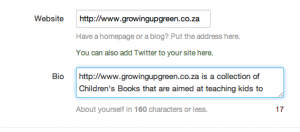
This ensures that you’ve got your hyperlinked web address as per normal, and you’ve also got an additional hyperlink in the short description about you or your company. Now for the fun stuff!
Sites for Twitter Link Building
These sites are all listed here because they will either link directly back to your Twitter profile or they’ll allow you to sign in with your Twitter account and add links. They’re all well ranked and will offer up a great deal of clout for your link building efforts. Speaking of clout…
Klout
Google PageRank of 7
If you’re signed up with Klout, you’ll automatically get a backlink from them and they’ll pull the information from your Twitter bio, thus pulling your weblink with a dofollow link. You can also add links to your other social networks and receive an overall score of your weight on the social scale.
Twitter Grader
Google PageRank of 6
Twitter Grader is similar to Klout in that it scores your social activity on Twitter. The home page requests that you enter your Twitter username before you can be scored, but once you have created a page you can access the site via http://tweet.grader.com/username. Twitter Grader links back to your profile with a nofollow link.
Twellow
Google PageRank of 6
Twellow is one of the larger Twitter directories that is also split into easy to use categories. Your Twitter handle might already be listed on the directory, if not, you’ll have to register. Once joined, you can authorize your Twitter profile and customize your bio to include hyperlinked anchor text, which will be a dofollow link.
TwitterCounter
Google PageRank of 6
TwitterCounter is a great tool for keeping track of your tweets, followers, those you follow and your overall reach for up to six months. It’s an awesome way to get a link back to your Twitter profile. You might already have an account, but if not it’s easy to register. It pulls your Twitter bio through, as well as the link associated with it.
Other Worthy Sites
• Twitaholic pulls your Twitter profile bio and weblink, but only the weblink is hyperlinked, with a nofollow link - Google PageRank of 6
• Listorious also pulls through your bio and weblink, but only hyperlinks the weblink. Once you’ve authorized your profile on the site, you’ll benefit from a lovely dofollow link – Google PageRank of 6
• Tweetlevel scores your Twitter activity much like Klout does, although it doesn’t have the influence of the latter. It pulls your bio and weblink and hyperlinks the weblink with a dofollow link – Google PageRank of 5
• twtBizCard gives you the opportunity to create a digital business card pulling your bio and weblink from your Twitter profile and hyperlinking both of them with dofollow links – Google PageRank of 5
• Favorious allows you to tag your favorite tweets as well as keep track of all your favorite items on Twitter. It pulls both your bio and weblink and hyperlinks both of them with dofollow links – Google PageRank of 4
Other sites that offer the same or similar services using your Twitter profile information include: Retweet Rank, TagWalk, Crowdreel, SNpros and Twitperts. Try for yourself and let us know if you come across any problems. Please also feel free to share with us your own examples of sites that encourage link building using your Twitter profile.
Image courtesy of: spring-of-poem.blogspot.com
Bio: The following is a guest post by Katherine Stott, a writer for Chicago-based Northcutt, who offer social media marketing services.
[image error]
January 6, 2013
Socializing Can Save Company Money on Auto Insurance
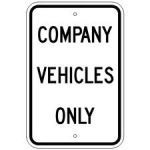
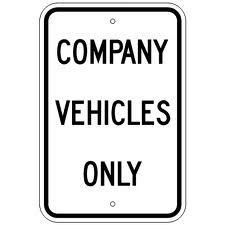 With 2013 off and running, what are some of your resolutions to make it a banner year for your small business?
With 2013 off and running, what are some of your resolutions to make it a banner year for your small business?
For those companies who are looking for means to save money in the New Year, there are a number of things that can be done. From saving money on marketing and advertising budgets to cutting down health insurance expenses, there are many options for small business owners.
In the event your employees and/or you use company vehicles to conduct business with customers, do you know what you will be paying for auto insurance in 2013? Turning to social media to drive off with savings can be a boon for your company, especially when financial times are challenging for many small businesses.
According to a 2011 survey from the Gartner research firm, a mere 14 percent of consumers place faith in traditional advertisements while 78 percent fall back on user-generated commentary and product reviews.
The survey pointed out that three out of four Americans now turn to social technology, with thousands joining Facebook, Twitter, YouTube and other networks daily.
While your auto insurance bills may not seem like a major priority, they can end up costing your business extra money that could be better spent elsewhere. Given the fact that you must have coverage for tasks like delivering goods and meeting with clients to discuss business, what are some things to consider going forward?
Among them:
1. Use social media to shop around – Just as you shop around for various supplies and machinery for your small business, you need to do likewise for your auto insurance quotes. One way to go about this is via social media. Check to see which insurance companies are prevalent on sites such as Facebook, Twitter and Pinterest. Look to see how often they engage with consumers, if they offer relevant links to auto insurance data, and how much of a following they have. If you don’t get a good feeling about their social media efforts, it could be a harbinger of things to come with their customer service;
2. Shop for available discounts – Some insurers will encourage small business owners to work with them by offering them special discounts, including on social media. If you engage with an insurer on one or more of their social media sites, you could be eligible for discounts on bundled policies, defensive driving classes, association discounts and loyalty discounts. Wherever you can get savings, take advantage of them;
3. Review present coverages – You may be paying too much for auto insurance to protect your company and your employees, so take a new year to review what you have been paying for. For those small businesses with older vehicles, at least look into deleting collision and comprehensive coverage altogether. Keep in mind that both coverages can add up to 40 percent or more of your premium expense, only covering the vehicle’s replacement value;
4. Emphasize safety – It is also important for small business owners to put a premium on driver safety. Whether your worker is just going a short distance to meet a client and/or make a delivery, they need to obey the rules of the road. To do otherwise could result in tickets and/or accidents that could increase your auto insurance premiums. Each new employee should be briefed on what is expected of them when they take to the road representing your business.
If you had not thought of turning to social media to better your auto insurance needs, drive off with the savings that could come in your direction.
[image error]
January 4, 2013
Get Social With Your Company’s Promotions
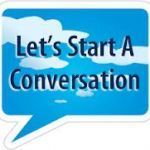
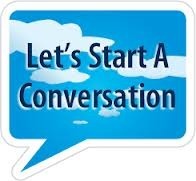 If your company’s promotional efforts were not quite what they should have been in 2012, what do you plan to do about them over the next 12 months.
If your company’s promotional efforts were not quite what they should have been in 2012, what do you plan to do about them over the next 12 months.
There are a number of ways with which you can improve upon on how you reach out to current and potential customers. Without such efforts, you could find your small business coming across to the general public as a little anti-social.
According to a 2012 marketing report from Sagefrog Marketing Group, nearly 45 percent of companies indicated they were likely to spend more on marketing this year, with some 66 percent indicating social media marketing would be a key tool in their overall strategy.
A number of respondents reported that SEO and email marketing would continue to be important channels with which to communicate with consumers, with web and email marketing tabbed as the two best channels towards lead generation behind direct referrals.
So, no matter which way or ways you find to be best in promoting your business, how will you go about that in 2013?
Some means include:
* Social media – Even though there is still a sizable portion of small business owners who do not fully understand and appreciate social media, not to mention its importance to their companies, many do in fact get it. Keep in mind that social media is in essence free, albeit time and effort required on your part. Using social media to get your business name out there, be it on Facebook, Twitter, Google+, Pinterest or other sites, puts you in front of countless eyes. As you do so, you have to frequently update your social media pages, include links to relevant articles and information that will assist customers, and lastly engage consumers. Even though social media may seem a bit time consuming to some business owners, the rewards can be priceless;
* Put your staff to work – One of the best assets for your small business is right in front of you, your employees. Use them to assist in promoting the company on a daily basis via word-of-mouth conversations, social media and other means. Some business owners do not want their workers taking part in social media efforts for the company, while others applaud it. If you approve of your workers using social media on the job to promote the business and even engage with consumers, make sure they know the rules. Everyone must be in sync as to how to use social media when it is represents the business. Employees can also spread the word via their regular conversations with family and friends, basically turning them into free advertisers;
* Promotional items – One of the easiest and more successful ways to grab the attention of both current and potential customers is by making available promotional products. Anything that has your business name, contact details, logo, etc. on it should be pushed out in front of the public. Being the New Year just kicked off, you can offer consumers items like personalized 2013 calendars, pens, hats, t-shirts, mugs and more. Once they have these items in front of them, they are more apt to have them out in public view, allowing other potential customers to come across them.
As 2013 unfolds, set the stage for a great year by becoming more social, doing a better job engaging your employees, and promoting all the great things your small business can offer the public.
Photo credit: marketcloud.us
[image error]
Reasons to know “Why Social Media is failing your business”

Failing at social media is not uncommon for any business. Moreover, the fault might be due to a number of reasons. Here are some of the reasons that it might be failing your business and may need some urgent attention and action.
#1. Missing Clear Goal or Objective:
Check and make sure that the content shared in the social media has a clearly defined end goal. In case your page on social media does not speak of a clear goal, then it might not be able to deliver the desired results. A clearly defined goal and well designed content can generate new consumers, loyal fans and followers and do a lot more to improve your overall standings. A well developed content with a perfectly defined goal will do a lot of good to your business and reputation.
A clearly defined vision and objective also helps build a brand and consciousness about the brand.
#2. Blogging Quantity and Quality:
One of the major strategies of social media marketing is to post content on a regular basis. The main objective behind this is to keep your audience loyal and attentive. Keeping regular content, which is engaging and helpful is always a key to have a following, and ever increasing audience. This also helps to build a reputation about the business. This also helps to develop business in the long run as well.
In case you have a definite following and a definite niche, use well developed and informative content. Understanding customer’s need and their psyche to develop content with that in mind can go a long way to help you business. This will also create a huge brand consciousness among the media users.
#3. Audience connection:
Always make sure that you are always connecting with your audience. Use the comments and discussion forum to interact with them. Interacting with consumers in those forums and communicating will be of great help in boosting your company’s reputation. Also these comments and communication will build a base of loyal followers and consumers. This will also help you or your company to establish itself as a brand and also as an expert.
#4. Channel Utilization:
Make sure that you are using all the available social media outlets. Use all possible social media for maximum exposure. Moreover also ensure to use some social bookmarking sites also. These sites make you or the business more visible on the net. Also try to use visuals like pictures, videos to make the presentation and blogs more interesting. Using video blogs for developing contents will ensure better results.
#5. Cross Promotion:
Use teasers and partners to promote all campaigns. But make sure to start any campaign or marketing way advance before coming to actual event.
Conclusion:
For a proper result from social media, you need to stay focused and committed. The most interesting aspect about social media marketing is that it can be managed within a short time and can give huge exposure. Keep in mind to keep goals that are realistic and achievable, developing content that is engaging and informative, along with a continuous and comprehensive communication with the followers. More importantly do not forget to use all the social media and social bookmarking sites to the best effect.
About The Author: Kelly is a blogger by profession. She loves writing travelling and reading books. She contributes for Hydroxycut. Find here her contribution for Hydroxycut
[image error]



